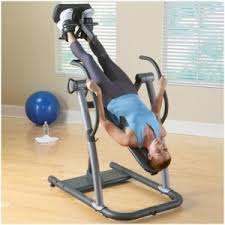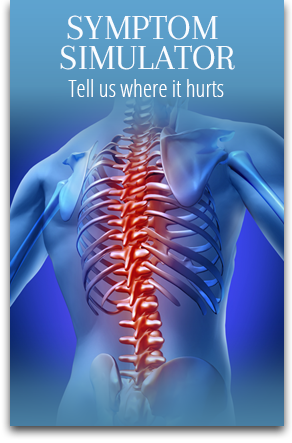Just Hanging Around, Upside Down!
Q: You’ve mentioned inversion tables in a previous article. What are they, and how do they benefit people with back pain?
A: Simply put, an inversion table is a device that can be used at home to allow its user to hang upside down. While there are subtle differences among current models, the basic design generally stays the same. A “table” shaped roughly like a short ironing board is suspended just above the ground by a simple frame. There is a rod across the middle of the table that rests on the frame, allowing the table to act like a seesaw. When the table is vertical, the user can back up to it and clamp his or her ankles into an apparatus at the bottom end of the table. When the user leans back, the table leans as well. It can lean back to the point that the user is completely upside down, essentially hanging by the ankles.
I grew up watching my father hang upside down from a pull-up bar. He wore a pair of boots with hooks on them to achieve this feat. The inversion table offers a simple alternative to these cumbersome boots, and saves the user the hassle of getting his or her feet all the way up to the bar (add back pain to that equation).
In order to understand the benefit of such a device, it’s helpful to grasp a few physiological concepts. Realize that animals with spines (vertebrates) have discs between the bones of the spine. While our discs are quite similar to those of other animals, we actually bear our weight on them, whereas the others generally don’t. We make several adaptations to accommodate this situation, but many of our daily activities put unwanted pressure on the discs themselves, thereby increasing risk of injury. The knuckle-like joints of the spine (behind the discs) serve, in part, to decrease the amount of pressure that the disc must sustain. Many times, however, there is too much pressure on these joints (weak abdominals often lead to this), and they will hurt much like a jammed knuckle.
A common misconception is that an inversion table simply allows a person to hang upside down. In fact, one can simply lie in a 20 or 30-degree decline (arbitrary values) and stay there if it feels good. Whether declining to 20 degrees or 180, the unwanted pressures on the discs or knuckle-like joints of the spine can be counteracted by this activity, and I have personally enjoyed these pain-relieving benefits. I have found these tables exceptionally easy to use and even fun. One can expect to pay $120 – $600 if purchasing an inversion table.
The vast majority of patients I see would not have a problem utilizing an inversion table. There are, however, conditions that would contraindicate its use (it could harm them), and consultation with a physician is advised prior to usage.
Hugh Cradduck, DC







